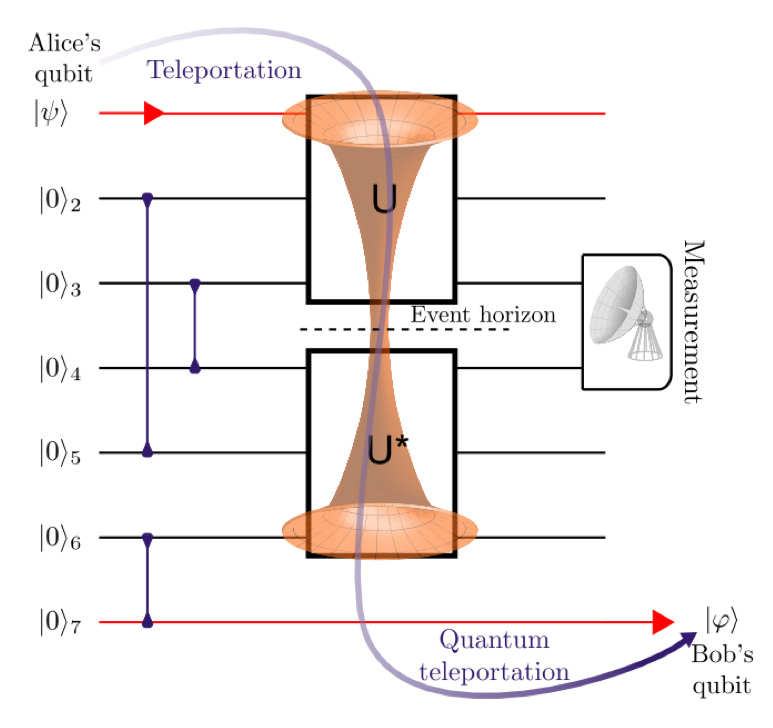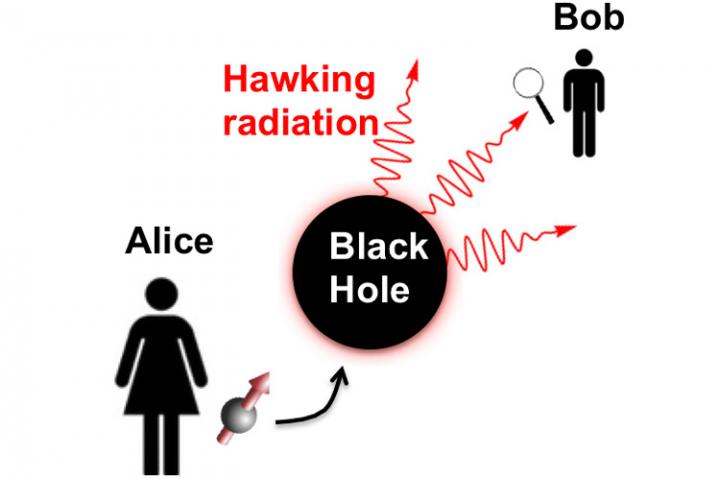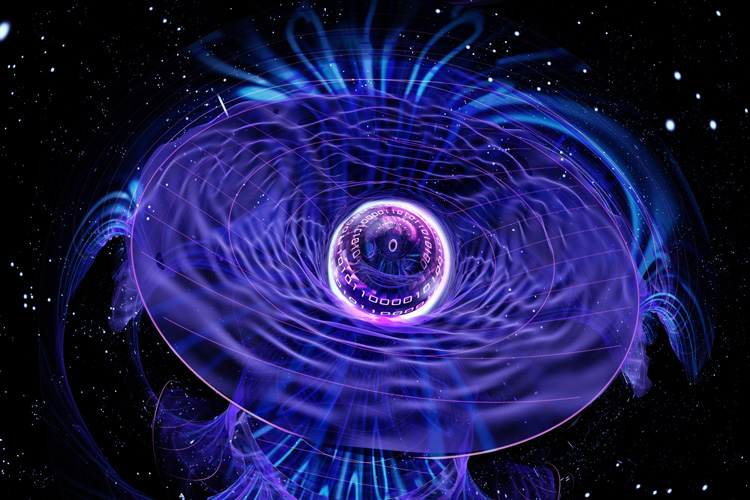How to look inside a black hole
When mass is so strongly concentrated that not even light can escape its gravitational field, physicists call this phenomenon a black hole. In reality, however, the name doesn’t quite fit its true physical nature. This is because some radiation, so-called Hawking radiation, is indeed emitted from a black hole. In addition, black holes set their surroundings in so much turmoil that in no way do they remain invisible: the matter falling into the hole forms an accretion disk around it, there are all kinds of swirling, turbulent magnetic fields – there’s little reason to fear falling into a black hole without seeing it first.
But what you are seeing always comes from the black hole’s surroundings, not from its interior. That leads to a real problem. Namely, if matter falls into a black hole, all of the information associated with that matter is lost. The black hole would never give it back! But, if quantum mechanics is to be believed, information cannot simply disappear. Physicists call this problem the black hole information paradox.
Ingenious scientists have found a way out of this paradox: simply wait until the black hole has shrunk to half its mass and then extract the stolen information again. That might be an easy thing to postulate, but it will be hard to prove. For a black hole with the mass of the Sun, you would have to wait 1067 years, which is much longer than the universe has even existed.
Black holes shrink through the phenomenon of Hawking radiation. This phenomenon is based on the idea that pairs of particles are constantly being created out of nothing. Normally we don’t notice anything, because they very quickly mutually annihilate each other. But if a pair is born close to a black hole, it can happen that one of the pair falls into the hole, but the other escapes. The survivor leaves the area as Hawking radiation. Because it was created from nothing, the new mass must be balanced out from somewhere – and that is from the black hole, which now becomes a little bit lighter. Eventually, something must always pay back the energy debt to the universe.
Hawking radiation, however, might also allow a peek into the black hole, even though its created outside of it. This has been shown by US researchers led by Norman Yao from the University of California Berkeley in an article in the scientific journal, Nature. The physicists send an entangled Qbit into a black hole and then use measurements of the Hawking radiation to determine the state of the Qbit – inside the black hole. For this experiment they didn’t all climb into a space ship. Instead, they simulated a black hole using a three-Qbit quantum computer and monitored this system with a seven-Qbit quantum computer. The “outer” computer, the measuring system, could then clearly show the state of a Qbit in the “inner” quantum computer.
It will still be a few centuries before we can develop a practical use of this method on actual black holes. But researchers already have an idea on something else they can use their system for: monitoring and determining the characteristics of current quantum computers. Even this has the problem that just looking corrupts the measurement. So, we need to develop ways to look into the cooking pot without lifting the lid. Testing the vapors and aroma coming from the pot – figuratively speaking – is surely not a bad idea.



Quick typo: “you would have to wait 1067 years” should be “you would have to wait 10^67 years”.
Oh, yes, of course! Thanks!